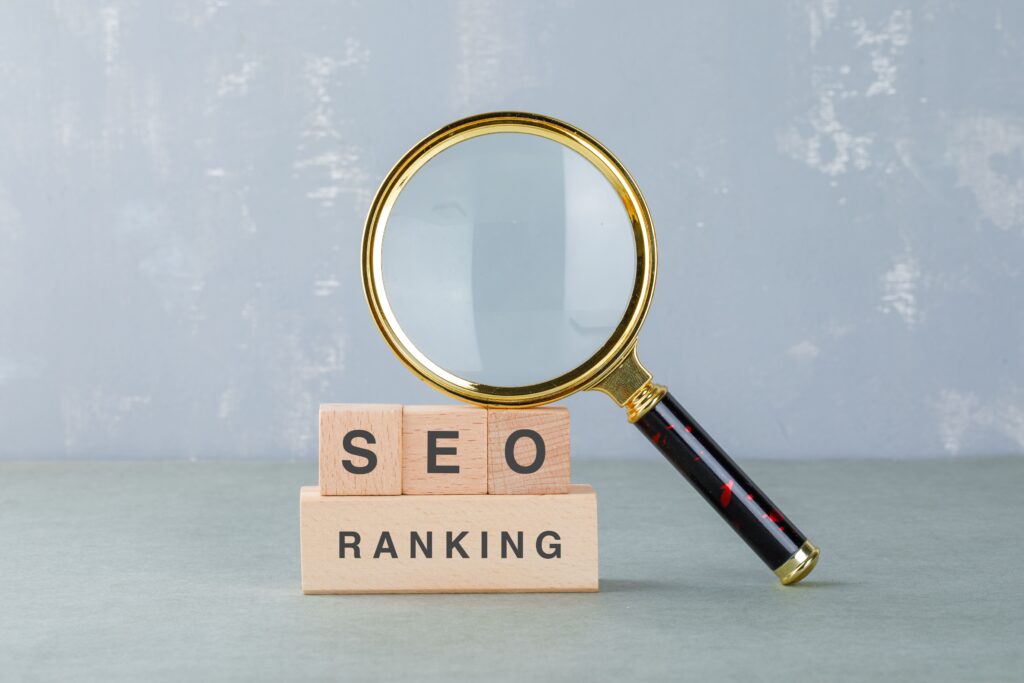Occasionally, Google algorithm changes make headlines, but sometimes the most significant changes are concealed in minor technical adjustments. When Google disabled the long-standing &num=100 parameter in September 2025, it was one such change. Although the detail might seem insignificant, it has a big impact on SEO tools, rank tracking software, and Search Console reporting. As a result, any SEO expert, digital marketing manager, or business that depends on organic visibility should take note.
For professionals and businesses that rely on data-driven SEO tactics, this blog explores what transpired, why it matters, and how your team can adjust to this change.
What Changed: Google Disabled The &num=100 Search Results Parameter
With the help of the &num=100 parameter, rank trackers and SEO experts could retrieve 100 search results for each query in a single request. For years, tools have used this shortcut to track keyword performance and SERP volatility more easily and affordably.
- Around September 10, 2025, the SEO community started to notice that forcing 100 results was no longer consistently working effectively.
- By the middle of September, platforms verified that the parameter was being tested or had been completely disabled.
- Since Google has not issued an official statement, tool vendors and SEO analysts are left to speculate about the company’s intentions and potential long-term effects.
- This move is in line with a larger pattern where Google restricts automated access to SERP data for compliance and anti-abuse purposes.
- The change serves as a reminder to enterprise marketers of the vulnerability of relying solely on SEO tools that rely on scraping.
This change is more than just a backend tweak. It has an immediate effect on the metrics used to measure search visibility and the precision with which tools can monitor your competitive environment.
Why The &num=100 Removal Matters For Rank Tracking Accuracy
The foundation of an enterprise SEO strategy is rank tracking tools. For daily keyword rankings, competitor insights, and SERP feature monitoring, they depend on effectively extracting large amounts of data. Eliminating the capability to retrieve 100 results in a single request has immediate repercussions:
- Data Disruptions: Beginning on September 10, several tools reported error states, delayed reports, and gaps in rankings.
- Cost Increase: As Keyword Insights pointed out, the previous “1 request for 100 results” now necessitates 10 separate requests, which multiplies costs by 10.
- Inflated Impressions Corrected: According to SEO analysts like Clark, bots retrieving 100-result pages frequently resulted in increases in desktop impressions. These impressions disappeared when the parameter was removed, revealing a more accurate representation of actual user behaviour.
- Tracking Delays: Rank updates may take longer to compile, reducing the near-real-time responsiveness marketers have relied upon.
- Diminished Coverage: Smaller tools might find it difficult to adjust, which would restrict keyword datasets and affect competitive intelligence.
This means that for businesses, the trusted keyword positions may change overnight due to changes in measurement methodology rather than a decline in performance.
The Impact On Google Search Console Data And Desktop Impressions
This shift is closely related to metrics in Google Search Console (GSC), which is the main dashboard used for SEO reporting in many businesses.
- While average position improved, many accounts displayed a sharp drop in desktop impressions after September 10.
- Analysts contend that this “impression drop” is not a result of an abrupt drop in traffic, but rather the removal of bot-driven data.
- AI Overviews were previously frequently blamed for inexplicable discrepancies between impressions and clicks. Inflated impressions generated by bots could now account for a portion of that “great decoupling.” (theory)
- Without corrections, long-term trend lines could appear warped, which would reduce the accuracy of year-over-year SEO reporting.
- This compels companies to give click-through rate (CTR), conversion metrics, and engagement signals more importance over unprocessed impression data.
In light of this change, reporting teams and marketers must:
- Restore baseline reporting after September.
- If impressions don’t match clicks, reexamine historical data skeptically.
- Inform stakeholders of these subtleties to prevent performance declines from being misinterpreted.
How SEO Tool Providers Are Responding To The Change
Tool suppliers are already adapting their infrastructure:
- The 10x cost increase for providing accurate ranking data was openly acknowledged by Keyword Insights.
- Temporary data gaps were noticed by independent SEO experts in SERP sensors, screenshot generators, and daily ranking modules.
- SEO software may be caught in the crossfire as a result of Google’s efforts to reduce aggressive SERP scraping by AI tools, according to analysts like Ryan Jones.
- To rebuild entire datasets without using bulk parameters, enterprise SEO suites are giving priority to pagination techniques.
- To provide more reliable rank tracking at scale, some providers are experimenting with different Google API integrations.
Practically speaking, this means that as vendors absorb higher costs, rank tracking subscriptions may become more expensive for businesses. Businesses must also evaluate whether their present supplier is open and flexible enough to make quick adjustments.
What This Means For Businesses, Content Marketers, And SEO Specialists
This shift affects more than just tools; it also affects how marketing teams evaluate performance and formulate strategies:
- Reporting Resets: After this change, desktop impression baselines are different. Instead of comparing performance to historical data, compare performance week-over-week after September 10.
- Risks Associated with Competitive Analysis: If left unchecked, gaps in competitor ranking visibility could cause strategic decisions to be incorrect.
- Impact on the Enterprise: Large companies that rely heavily on automated SEO analytics are particularly susceptible to interruptions.
- Refinement of the Content Strategy: It is simpler to calculate the return on investment (ROI) of content marketing when there are fewer inflated impressions.
- Communication with Stakeholders: To preserve executives’ confidence in SEO reporting, marketers need to proactively explain these changes to them.
It emphasizes to content marketers the value of concentrating on user engagement metrics (conversions, CTR) as opposed to chasing impressions. It serves as a reminder to entrepreneurs to collaborate with suppliers who can swiftly change course when Google search changes the market.
Preparing Your SEO Strategy For Google’s Next Moves
The &num=100 parameter’s removal is a blatant indication that Google is limiting access to SERP data. To prevent long-term blind spots, businesses need to adjust now. The following are examples of practical steps:
- Check your GSC Information: Determine and record the changes in impression and ranking baselines.
- Speak with the Company that tracks your Rankings: Find out if they pass on cost increases to their clients and when they plan to adapt.
- Diversify your Data Sources: For a more comprehensive view, think about combining data from analytics platforms, third-party clickstreams, and Google Ads.
- Make sure your SEO Analytics are Future-proof: Anticipate more limitations on scraping. Continuity can be ensured by investing in agency partners who have access to enterprise SEO intelligence tools.
- Pay Attention to KPIs that are User-centric: Prioritize organic traffic quality and conversion optimization over vanity metrics.
- Planning Scenarios: Create “what if” structures to help your team react more quickly to unexpected changes in Google search results.
Restructuring your SEO reporting ecosystem to withstand Google’s changing environment is more important than simply filling a gap.
MetroMax BPM: Future-Proofing SEO Analytics For Enterprises
We at MetroMax BPM assist companies in turning these kinds of disruptive changes into opportunities. We guarantee that your brand remains strong when Google changes the rules thanks to our decades of combined experience in enterprise SEO management, digital marketing automation, and SEO data intelligence.
- Custom SEO Dashboards: Designed to avoid reliance on single-point failures, such as the &num=100 parameter, by utilizing multiple verified data sources.
- Advanced Rank Tracking Solutions: To provide precise keyword visibility without exaggerated bot-driven impressions, we collaborate with top providers and proprietary models.
- Enterprise Consulting: We convert intricate Google updates into measurable business impact, from SEO audit services to continuous campaign management.
- Proactive Adaptation: MetroMax BPM looks out for new developments, enabling us to modify our tactics before rivals do, whereas many agencies rush to recover from disruptions.
- End-to-end Marketing Solutions: For scalable expansion, we combine web development, marketing automation, and content marketing in addition to SEO.
- Reliable Enterprise Partner: We are trusted by our clients to protect their analytics infrastructure from unforeseen Google changes.
It’s time to collaborate with a team that can bring clarity and confidence back to your reporting, rank tracking, or performance dashboards if they have been affected since September 2025.
To create a robust SEO framework that flourishes in Google’s constantly shifting landscape, get in touch with MetroMax BPM right now.
Final Comments
More than just a technical change, Google’s decision to disable the &num=100 parameter marks a significant turning point in the future of SEO tracking and reporting. It challenges established procedures, but it also forces companies to rely more heavily on user-focused KPIs and clean, more accurate data. Businesses with the right partners and rapid adaptation will not only survive these changes but also gain a competitive advantage.
To make sure your SEO strategy stays ahead of Google’s next move, MetroMax BPM is here.














